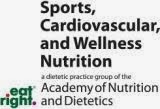Corny title aside, a lot of athletes want to know what’s
going on in their favorite pre-workout, over-the-counter multivitamins, or drinks. The following two apps help consumers debunk
ingredients.
MY DIETARY
SUPPLEMENTS (MYDS) MOBILE APP
The Office of Dietary Supplements (ODS) has created a free
mobile app for consumers called My Dietary Supplements (MyDS).
This app features:
- An
easy way to keep track of the vitamins, minerals, herbs, and other
products you take—right in the palm of your hand.
- Access
to science-based, reliable information on dietary supplements.
- General
information about ODS—who we are and what we do.
Simply enter the names and amounts of your dietary
supplements, and they'll be stored for your use anytime, anywhere—for example,
when seeing your doctor or shopping. With MyDS you also can email your personal
list of dietary supplements to yourself or to your health care providers and
print it out for reference.
AEGIS SHIELD
Aegis Shield’s motto: HELPS KEEP ATHLETES CLEAN AND IN
THE GAME by providing a web site and mobile app designed to identify
the presence of banned ingredients in dietary supplements. This is an
up-to-date database that enables the consumer to scan bar codes or search
products to see if a supplement has banned ingredients.
 |
| Source: |
According to their website: “Aegis Shield® is an extensive,
up-to-date database that enables you to search products or product bar codes to
determine if your supplement’s ingredients (as listed on the label)
contain substances banned by your designated sport's Banned Substance List
(e.g., WADA, NFL, MLB, NASCAR, College).”
Additional features:
- Download
on Apple and Android
- Securely
search our database of more than 100,000 products by name or bar-code scan
- Product
searches result in an Okay, Caution,
or Banned rating based on your organization’s banned
substance list
- Decide
on supplement use with the help of trustworthy information that has been
analyzed and reviewed by Aegis Experts
- Cost? Less than a cappuccino. $2.99 annual subscription when you create a user account to access the content.
Source: https://www.aegisshield.com/
Gina Lesako RD, LD is
the SCAN blog coordinator. Those interested in contributing to SCAN can contact
her at glesako@gmail.com.
Twitter: @glesako




